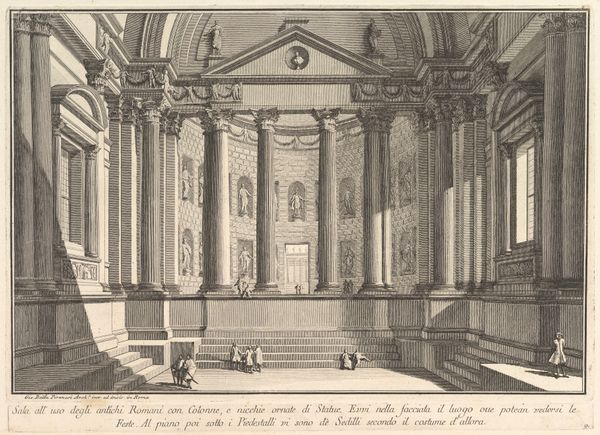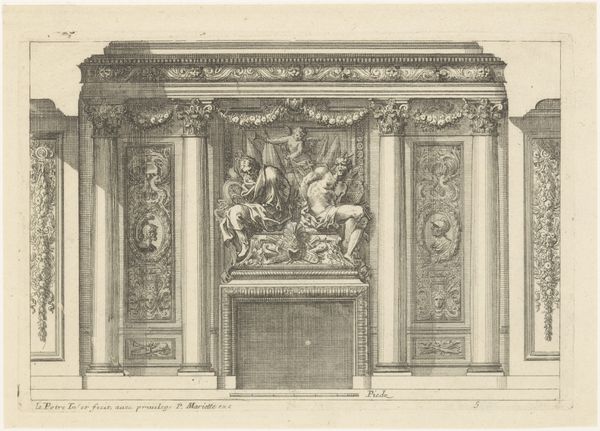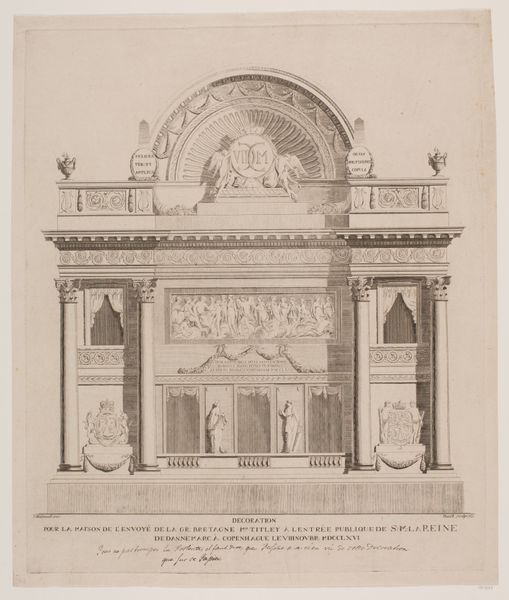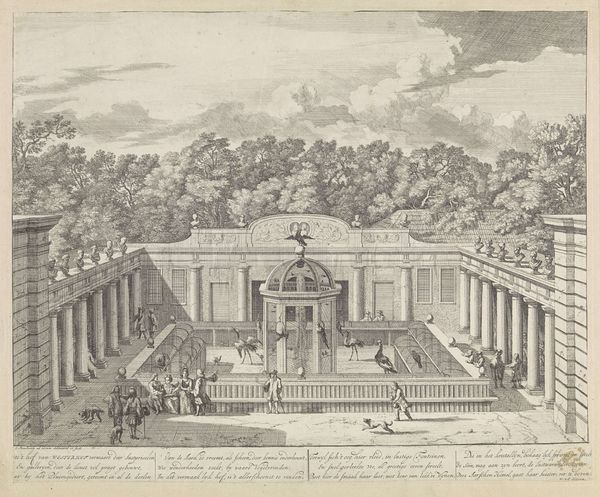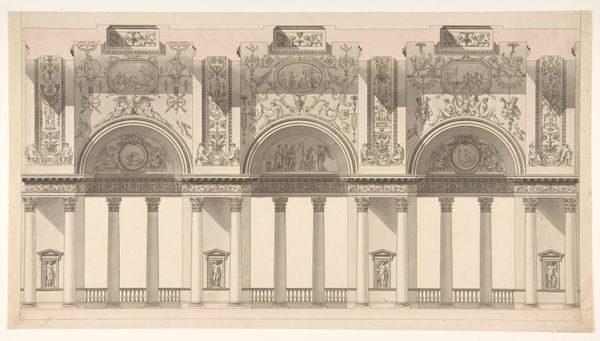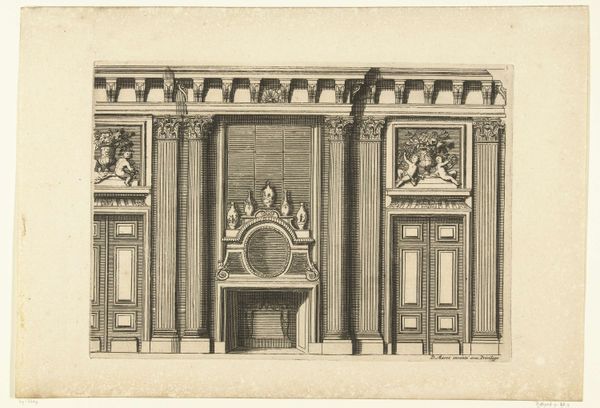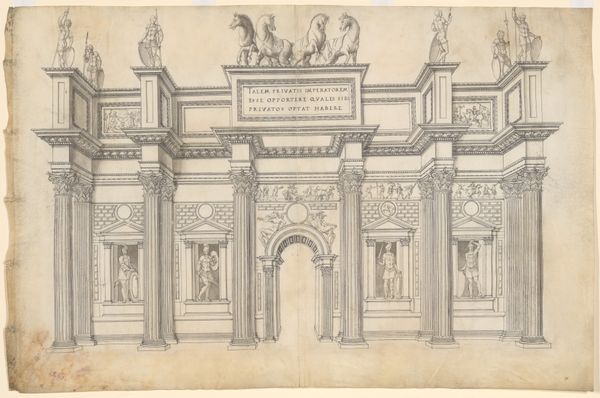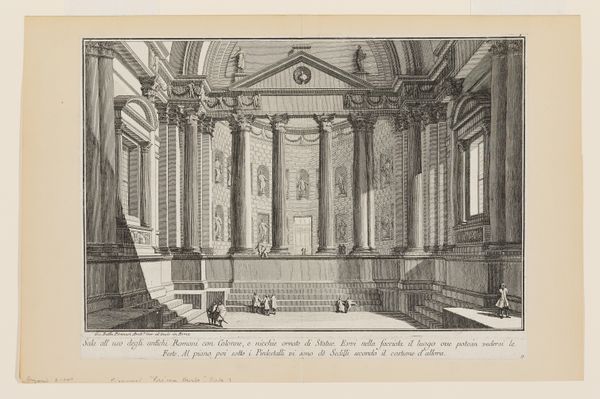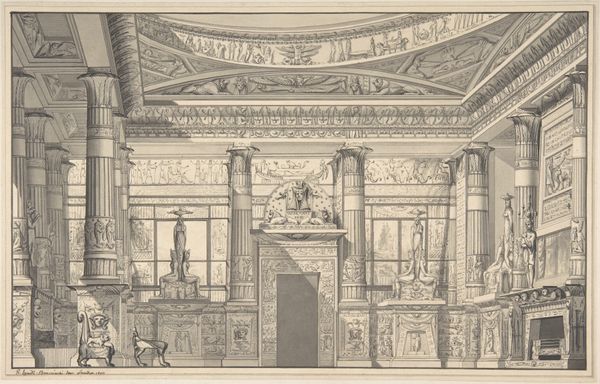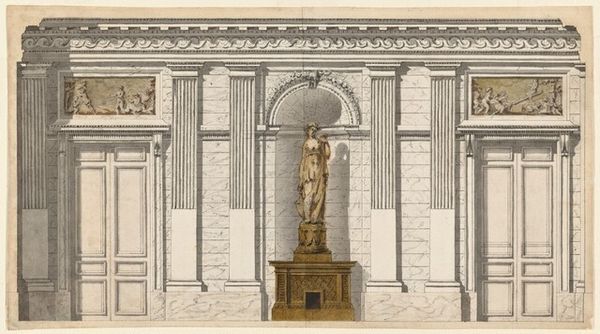
Facade i anledningen af Dronning Caroline Mathildes indtog 1741 - 1770
0:00
0:00
print, etching, engraving, architecture
#
baroque
# print
#
etching
#
classical-realism
#
etching
#
cityscape
#
history-painting
#
engraving
#
architecture
Dimensions: 484 mm (height) x 630 mm (width) (plademaal)
Curator: Looking at this etching, what strikes you first? Editor: The almost clinical precision. It's like a perfectly balanced stage set, but somehow… joyless. It feels more about architectural ambition than celebrating a queen, don't you think? Curator: It's interesting you say that. This is Johannes Gottfred Bradt's "Facade in Honor of Queen Caroline Mathilde’s Entrance," likely created between 1741 and 1770. The artwork, currently held at the Statens Museum for Kunst, presents a fascinating historical snapshot of royal spectacle. What kind of social dynamics were at play here? Editor: Totally! Like, what narrative are we being sold? Is this facade genuinely meant to honor her, or is it more a performance of power, an attempt to control public perception through carefully constructed imagery? The Baroque flair definitely gives it an overdramatic feel, doesn't it? Curator: Precisely. Consider Caroline Mathilde's historical context: a young queen in a foreign court, her marriage politically motivated. How did this facade communicate, and perhaps obfuscate, her position? The use of classical realism, while conveying order, arguably suppresses more complex social realities and power imbalances. Editor: Oh, absolutely. You know, the clean lines, the idealized figures…it’s all so…sanitized. It makes me wonder about the untold stories hidden behind the facade, all those messy human emotions that are intentionally erased. I mean, think about the message sent through architectural control; even the citizens were being molded. Curator: Yes, consider its architecture: Corinthian columns arranged within the symmetric façade. Do these allusions to the Roman Empire promote ideals of order? The sculptures in niches could symbolize virtue. How much of this imagery reflects the queen's actual life, and how much served to project an ideal that suits Denmark's political agenda? Editor: Mmh, good point! This wasn't simply a building front; it was about engineering a symbolic narrative. It's the architectural equivalent of a carefully crafted press release, burying the gritty, human aspects beneath a veneer of classical dignity. Curator: I think Bradt’s engraving, intentionally or not, exposes the complex interplay between power, representation, and social control. Editor: Agreed, a building doesn’t just offer shelter; sometimes it tries to imprison stories too.
Comments
No comments
Be the first to comment and join the conversation on the ultimate creative platform.

